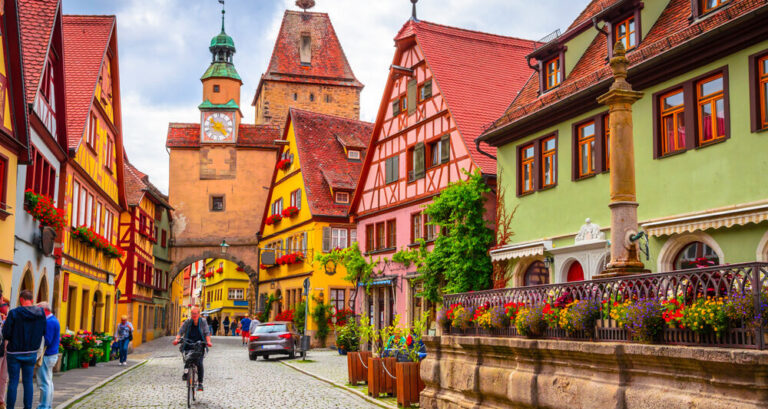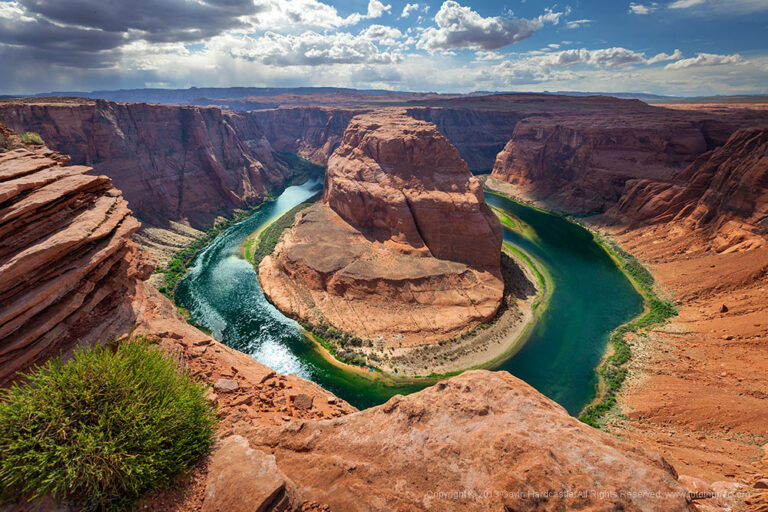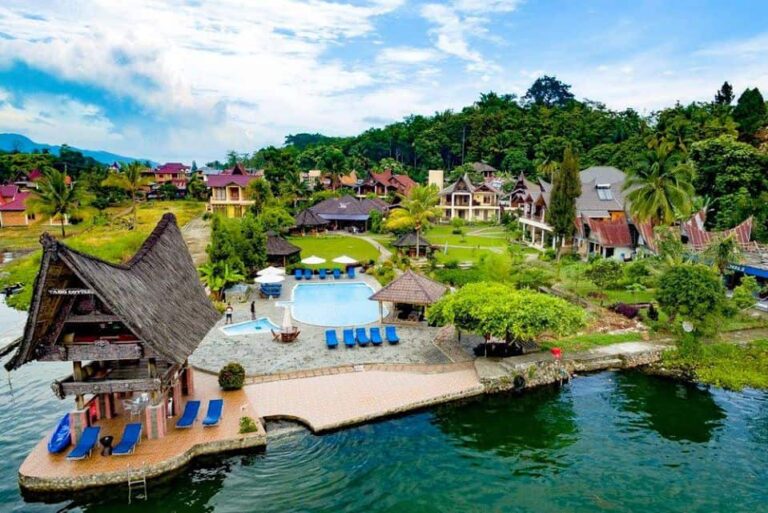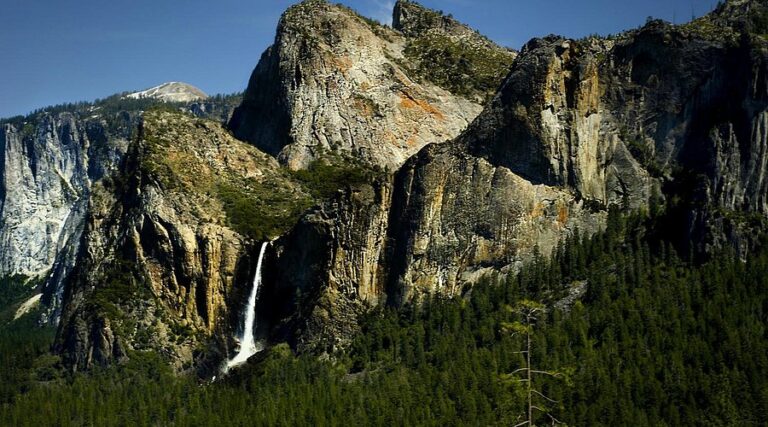Mount Ararat Turkey’s Legendary Peak of Myths, Ice, and Mystery
If mountains could talk, Mount Ararat would probably start with, “I’m not just a mountain. I’m the mountain.” Standing dramatically at 5,137 meters (16,854 feet), this snow-capped giant dominates the eastern Turkish skyline like a wise old guardian who’s seen civilizations rise, myths born, and hikers gasp for breath.
Also known by its Turkish name Ağrı Dağı, this mountain isn’t just Turkey’s tallest, it’s also its most mysterious. Think of it as a geographic mic-drop, placed dramatically near the borders of Armenia and Iran, looming large both physically and spiritually. Whether you’re a history nerd, a trekking junkie, or someone who read too much about Noah’s Ark in Sunday School, Ararat has something that’ll pull you in.
Fun fact: Despite being in Turkey, Mount Ararat holds major cultural and symbolic significance for Armenians, many of whom regard it as a national symbol, even though it’s no longer within Armenia’s borders. Awkward, huh?
Time to break it down… Sherlock style.
A Bit of Geography, Because Even Mountains Need a Pin on the Map
Mount Ararat isn’t a single mountain; it’s technically a dormant stratovolcano, and it comes in a two-for-one deal: the Greater Ararat (the big one) and the Lesser Ararat, which sits just southeast like its slightly shorter, less popular sibling (3,896 m or 12,782 ft). If Greater Ararat is Beyoncé, then Lesser Ararat is Solange, talented, important, but living in the shadow of the diva.
It’s located in Turkey’s Iğdır Province, near the town of Doğubayazıt, in the far east of the country, so far east, it’s practically waving at Armenia, Iran, and Azerbaijan.
Get this, Mount Ararat can photobomb your selfie from hundreds of kilometers away! It’s like that one extrovert friend who always makes sure everyone knows they’ve arrived.
Fire and Ice: A Volcanic Origin
Now, while the mountain looks calm and serene today, don’t be fooled, it’s had its volcanic tantrums in the past. Mount Ararat is classified as a dormant volcano, with the last major eruption believed to have occurred in 1840. That’s right, the last time Ararat blew its top, photography was still in its awkward teenage phase.
If mountains could talk, Mount Ararat would probably start with, “I’m not just a mountain. I’m the mountain.” Standing dramatically at 5,137 meters (16,854 feet), this snow-capped giant dominates the eastern Turkish skyline like a wise old guardian who’s seen civilizations rise, myths born, and hikers gasp for breath.
Also known by its Turkish name Ağrı Dağı, this mountain isn’t just Turkey’s tallest, it’s also its most mysterious. Think of it as a geographic mic-drop, placed dramatically near the borders of Armenia and Iran, looming large both physically and spiritually. Whether you’re a history nerd, a trekking junkie, or someone who read too much about Noah’s Ark in Sunday School, Ararat has something that’ll pull you in.
Fun fact: Despite being in Turkey, Mount Ararat holds major cultural and symbolic significance for Armenians, many of whom regard it as a national symbol, even though it’s no longer within Armenia’s borders. Awkward, huh?
Time to break it down… Sherlock style.
A Bit of Geography, Because Even Mountains Need a Pin on the Map
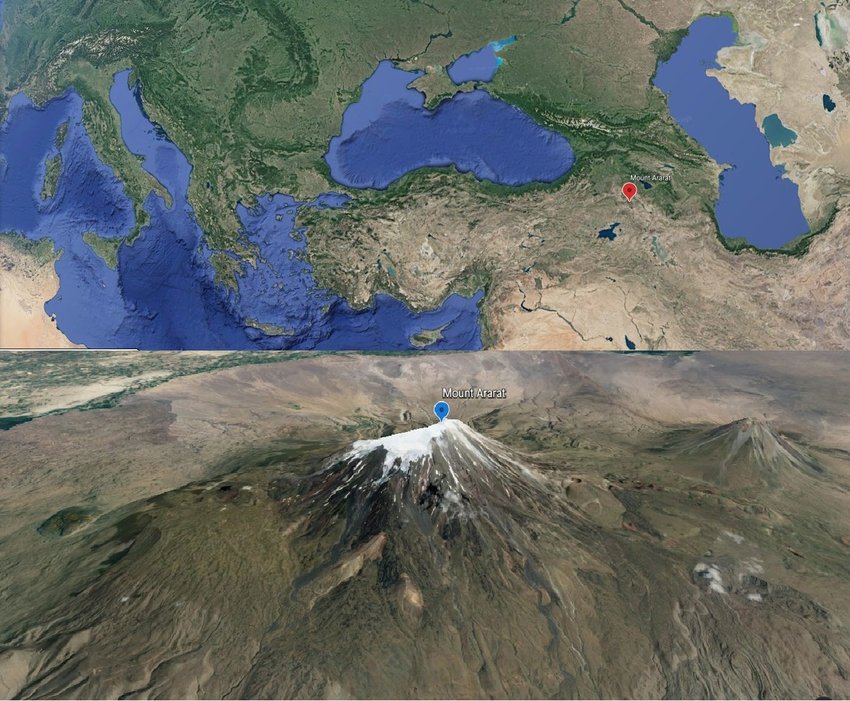
Mount Ararat isn’t a single mountain; it’s technically a dormant stratovolcano, and it comes in a two-for-one deal: the Greater Ararat (the big one) and the Lesser Ararat, which sits just southeast like its slightly shorter, less popular sibling (3,896 m or 12,782 ft). If Greater Ararat is Beyoncé, then Lesser Ararat is Solange, talented, important, but living in the shadow of the diva.
It’s located in Turkey’s Iğdır Province, near the town of Doğubayazıt, in the far east of the country, so far east, it’s practically waving at Armenia, Iran, and Azerbaijan.
Get this, Mount Ararat can photobomb your selfie from hundreds of kilometers away! It’s like that one extrovert friend who always makes sure everyone knows they’ve arrived.
Fire and Ice: A Volcanic Origin
Now, while the mountain looks calm and serene today, don’t be fooled; it’s had its volcanic tantrums in the past. Mount Ararat is classified as a dormant volcano, with the last major eruption believed to have occurred in 1840. That’s right, the last time Ararat blew its top, photography was still in its awkward teenage phase.
The surrounding terrain is littered with lava fields, ash deposits, and reminders that this mountain is more than just a pretty snowy cone; it’s a force of nature that, quite literally, helped shape the land.
Nerd note: It belongs to the Armenian Highlands, a vast volcanic plateau formed by tectonic activity between the Eurasian and Arabian plates. Yep, Mount Ararat exists because the Earth had a bad case of plate tectonics.
The Ark Side of the Story
Okay, let’s talk about the elephant-sized boat in the room: Noah’s Ark.
According to the Bible (Genesis 8:4, to be exact), Noah’s Ark came to rest on “the mountains of Ararat.” That single sentence launched a thousand expeditions, conspiracy theories, and History Channel episodes with dramatic voiceovers.
Over the centuries, explorers and religious adventurers have insisted they’ve found remnants of the Ark on Mount Ararat. Wood beams, boat-shaped formations, even radarscans, all kinds of “evidence” have surfaced, been disputed, and then replaced by newer “evidence.”
While no archaeological proof has been universally accepted, the legend persists, and it draws thousands of pilgrims and adventurers to Ararat every year. Because hey, even if you don’t find an ancient boat, you will find jaw-dropping views and a brutal cardio session.
Muslim and Christian traditions both associate Ararat with the Ark story. In Islam, the mountain is sometimes identified with Mount Judi instead, but Ararat still holds symbolic weight.
Scaling the Legend: Can You Climb It?
Short answer: Yes, if you’re prepared to obtain permits, hire a guide, and adapt to the mountain’s ever-changing moods like a teenage drama queen.
Mount Ararat isn’t a technical climb, but it’s high enough that altitude sickness becomes a real concern. Most climbers take the southern route via Doğubayazıt, usually over 4–5 days to acclimatize properly.
You’ll be walking through everything from green meadows filled with wildflowers and Kurdish sheep to volcanic scree fields and eventually snow-covered glaciers that whisper, “Don’t even think about wearing sneakers.”
And did we mention it gets cold up there? Like, “your water bottle turns to ice mid-sip” kind of cold.
Local Culture: Ararat in the Eyes of the People
For the Kurdish communities living in the area, Mount Ararat isn’t just scenery; it’s a backdrop to everyday life. Goats roam the slopes, shepherds whistle ancient tunes, and tales of the mountain’s moods are passed down through generations like family recipes.
Many locals believe that Ararat is ali, ve not in a spooky horror movie way, but in a sacred and powerful presence kind of way. Some elders speak of how the mountain “decides” when to allow climbers to the summit, based on weather and… vitally.
Add to that the deep national and cultural ties Armenians feel toward the mountain often seen in their literature, paintings, and even on the Armenian coat of arms, and you’ve got a rock that stirs souls far and wide.
Nerd note: It belongs to the Armenian Highlands, a vast volcanic plateau formed by tectonic activity between the Eurasian and Arabian plates. Yep, Mount Ararat exists because the Earth had a bad case of plate tectonics.
The Ark Side of the Story
Okay, let’s talk about the elephant-sized boat in the room: Noah’s Ark.
According to the Bible (Genesis 8:4, to be exact), Noah’s Ark came to rest on “the mountains of Ararat.” That single sentence launched a thousand expeditions, conspiracy theories, and History Channel episodes with dramatic voiceovers.
Over the centuries, explorers and religious adventurers have insisted they’ve found remnants of the Ark on Mount Ararat. Wood beams, boat-shaped formations, even radar scans, all kinds of “evidence” have surfaced, been disputed, and then replaced by newer “evidence.”
While no archaeological proof has been universally accepted, the legend persists, and it draws thousands of pilgrims and adventurers to Ararat every year. Because hey, even if you don’t find an ancient boat, you will find jaw-dropping views and a brutal cardio session.
Muslim and Christian traditions both associate Ararat with the Ark story. In Islam, the mountain is sometimes identified with Mount Judi instead, but Ararat still holds symbolic weight.
Scaling the Legend: Can You Climb It?
Short answer: Yes, if you’re prepared to obtain permits, hire a guide, and adapt to the mountain’s ever-changing moods like a teenage drama queen.
Mount Ararat isn’t a technical climb, but it’s high enough that altitude sickness becomes a real concern. Most climbers take the southern route via Doğubayazıt, usually over 4–5 days to acclimatize properly.
You’ll be walking through everything from green meadows filled with wildflowers and Kurdish sheep to volcanic scree fields and eventually snow-covered glaciers that whisper, “Don’t even think about wearing sneakers.”
And did we mention it gets cold up there? Like, “your water bottle turns to ice mid-sip” kind of cold.
Local Culture: Ararat in the Eyes of the People

For the Kurdish communities living in the area, Mount Ararat isn’t just scenery; it’s a backdrop to everyday life. Goats roam the slopes, shepherds whistle ancient tunes, and tales of the mountain’s moods are passed down through generations like family recipes.
Many locals believe that Ararat is Ali,v e not in a spooky horror movie way, but in a sacred and powerful presence kind of way. Some elders speak of how the mountain “decides” when to allow climbers to the summit, based on weather and… vitally.
Add to that the deep national and cultural ties Armenians feel toward the mountain often seen in their literature, paintings, and even on the Armenian coat of arms, nd you’ve got a rock that stirs souls far and wide.
The Ancient World: Ararat, Urartu, and the Birth of a Legend
The first recorded civilization in the Ararat region was the Kingdom of Urartu (9th–6th century BCE). These guys were the OGs of eastern Anatolia, and Mount Ararat sat right in their spiritual and political backyard.
“Ararat” is believed to be a variant of “Urartu”, mentioned in Assyrian texts and — wait for it the Bible. So when Noah’s Ark supposedly landed on the “Mountains of Ararat,” it was referring to this ancient kingdom, not necessarily the modern peak itself.
Historical head-spin: The phrase “mountains of Ararat” probably referred to a region, not a specific peak. But try telling that to 2,000 years of treasure hunters.
Enter: Empires, Crusaders, and… Everyone Else
Over the centuries, the region around Mount Ararat became a revolving door of empires. We’re talking Persians, Romans, Byzantines, Seljuks, Mongols, Ottomans, name a powerful army, and they probably marched past Ararat on their way to conquer something.
Each brought their interpretation of what this mountain meant. Some saw it as a symbol of divine presence. Others saw it as a big, cold obstacle in the way of their military ambitions.
Fast-forward to the Middle Ages, and you’ll find Armenian monasteries built in the shadow of the mountain, pilgrims trekking to see the sacred slopes, and Christian monks documenting every cloud pattern like Ararat was their boss.
Modern History: Borders, Battles, and Big Debates
Here’s where it gets… tense.
After World War I, with the fall of the Ottoman Empire, the borders in the region became the geopolitical equivalent of a tangled headphone cable. Armenia just got its freedom diploma and immediately claimed Arara,t like, ‘That mountain? Yeah, we grew up with it.
But in 1923, the newly-formed Republic of Turkey claimed Ararat within its borders, and it’s been officially Turkish territory ever since. Armenia lost access to what it considers a cultural and historical cornerstone, and the mountain now looms large and just out of reach from Yerevan, the Armenian capital.
Yep, from many spots in Yerevan, you can see Mount Ararat glowing majestically on the horizon. Imagine having your national symbol right there… and not being allowed to go near it. Oof.
A Mountain of Diplomacy… and Tension
Mount Ararat often makes quiet (and not-so-quiet) appearances in Armenian politics, Turkish diplomacy, and international affairs.
For Turkey, Ararat is a national park, a symbol of natural beauty, and a spot for eco-tourism. For Armenia, it’s an emotional homeland, an ancient marker of faith and identity.
It shows up on Armenian currency, in church murals, and even in Armenian poetry as a symbol of longing, both spiritual and territorial.
Let’s just say, if Mount Ararat were on Twitter, it’d be subtweeting everyone in three languages at once.
Tourism and the “Silent Giant” Today
In recent years, Turkish authorities have promoted Ararat as a destination for eco-tourism and mountain sports. Permits are required to climb, especially due to the sensitive nature of the border region and security concerns.
Despite its political baggage, the mountain continues to attract climbers from around the world in search of spiritual meaning, and others just hoping to cross off “summit Ararat” from their adventure bucket list.
Locals in Doğubayazıt and surrounding towns offer food, lodging, and guide services, often blending ancient hospitality with modern hiking logistics.
Climb in July–September unless you enjoy surprise snow showers and frozen eyebrows halfway up the trail. Inevitable to slightly likely.
Ararat in Literature, Art, and Pop Culture
This mountain isn’t just a muse for nature photographers; it’s been immortalized in Armenian epic poems, Persian manuscripts, and even European travel journals.
One famous tale? The Daredevil Monks of Akori, a group of 19th-century monks who claimed to have seen remains of Noah’s Ark high up the mountain. They never brought down any wood or selfies as proof, but hey, faith moves mountains.
Modern writers often use Ararat as a metaphor for unreachable dreams, lost heritage, or the ultimate test of endurance. Kinda like trying to keep your phone signal while hiking up 5,000 meters.
Spiritual Symbolism: More Than Just Rocks and Ice
Whether you’re religious or not, there’s something deeply moving about Ararat’s presence.
Mount Ararat, where the Ark landed, the animals chilled, and humanity got a divine do-over. For others, it’s a geopolitical scar that keeps old wounds fresh.
And then some just stare at it, coffee in hand, wondering how something can look so peaceful and intimidating at the same time.
One traveler described Mount Ararat as “a mountain that prays in silence.” Not bad for a pile of volcanic rock, huh?
Part 3: Climbing Mount Ararat A Step-by-Step Journey to the Summit
If you’ve ever looked at Mount Ararat and thought, “Yeah, I could climb that,” then congratulations, you’re either brave, in shape, or slightly delusional. But hey, you’re in good company.
Thousands of hikers and adventurers attempt to summit Ararat each year, and while it’s not Mount Everest-level insane, it is a serious high-altitude challenge that demands respect, planning, and warm socks. Lots of warm socks.
Here’s a blow-by-blow breakdown of the whole experience from first basecamp to final victory selfie.
Step 1: Planning & Permits (a.k.a. Bureaucracy Meets Backpacking)
Let’s start with the red tape. Since Mount Ararat sits in a sensitive border zone, foreign climbers must obtain a permit from the Turkish government. No permit = no climb = long face at the foot of the mountain.
But don’t worry, most licensed guides will take care of this for you as part of the tour package. Just show up with your passport, a decent fitness level, and a willingness to sleep in a tent that flaps like crazy at night.
Pro tip: Book your trip 1–2 months in advance to allow time for paperwork. And no, bribing your way past checkpoints is not a vibe here.
Step 2: Basecamp & Acclimatization Where Altitude Hits Like Drama
Climbs typically begin in the town of Doğubayazıt, where you meet your guide, pack your gear onto mules (because even hardcore hikers appreciate four-legged Ubers), and start ascending to Basecamp 1, located at around 3,200 meters (10,500 ft).
The first day of hiking is a warm-up. You’ll pass grassy meadows, volcanic rocks, and shepherd huts that look like they’ve time-traveled from the Bronze Age. The air gets thinner, but the views? Chef’s kiss.
You spend the night at Basecamp 1 under a sky so starry it makes city people cry.
Bonus: Bring a camera or at least a solid smartphone; the Milky Way is ridiculously photogenic here.
Step 3: High Camp Cold, Windy, Beautiful
On Day 2, you continue up to High Camp at around 4,200 meters (13,800 ft). This is where things get real. Your pace slows. Your breathing shortens. Your brain starts Googling “what is oxygen” without your permission.
This is also when most people start feeling symptoms of altitude sickness dizziness, headaches, and occasional drama-queen moments. Guides monitor your vitals closely, and if you’re not acclimating well… down you go.
You’ll spend the afternoon resting, hydrating, and trying not to freak out about the 2 AM wake-up call for the summit push.
Step 4: The Final Push One Peak to Rule Them All
Summit day starts in the dark. Like, middle-of-the-night dark. You’ll gear up around 2:00–3:00 AM, strap on crampons, layer up like a human onion, and begin the long, slow crawl to glory.
The last section is steep, icy, and very. Why did I sign up for this in tone? But the feeling when you reach the summit?
Unmatched.
You stand at 5,137 meters (16,854 ft), the highest point in Turkey, with views over Armenia, Iran, and Azerbaijan. If the skies are clear, it’s not just breathtaking, it’s a near-spiritual out-of-body experience.
Summit selfies are mandatory. So is crying a little. That’s in the unspoken climber rulebook.
Gear & Gut: What You’ll Need to Survive and Thrive
Climbing Mount Ararat isn’t technical like K2 or Everest, but it does demand:
- Sturdy hiking boots (preferably waterproof)
- Thermal layers (hello, subzero nights)
- Crampons & ice axe (provided by most tour operators)
- Snacks (because trail mix is life)
- Sunscreen & sunglasses (that snow glare is no joke)
- Altitude meds (just in case your body pulls a diva move)
Oh, and don’t forget mental stamina. The mountain is just as much a mental game as a physical one.
Voices from the Trail Real Climbers, Real Feels
“I saw the sunrise from just below the summit. Pink sky, frozen eyelashes, and total silence. It felt like the mountain was whispering back.”
— Lina from Germany
“It wasn’t the hardest climb I’ve done, but the most emotionally powerful. You feel history all around you.”
— Kenji from Japan
“I cried at the top. Not from joy. From windburn.”
— Dave from New Jersey
The Other Summit Team: Mules, Dogs & Guides
Let’s not forget the local guides and porters, many of whom are Kurdish and know every inch of this mountain like the back of their calloused hands.
Their strength, humor, and mountain wisdom turn what could be a grueling experience into something beautiful and shared. You’ll hear songs around campfires, jokes in three languages, and stories that’ll stick with you long after the climb ends.
Some guides even bring mountain dogs who trot along like they own the place. Which, let’s be honest, they probably do.
Part 4: The Science, Myths, and Mysteries That Still Haunt Mount Ararat
Mount Ararat isn’t just a beautiful backdrop or a bucket-list climb. For centuries, it’s been a magnet for curiosity, a natural fortress wrapped in ice, fire, and more conspiracy theories than an internet rabbit hole.
Let’s break down the wild, the weird, and the wonderfully nerdy sides of this mountain.
Geological Marvel: Born of Fire, Forged by Time
At its core (literally), Mount Ararat is a stratovolcano, which means it was built layer by layer through a series of violent eruptions, lava flows, ash clouds, and pyroclastic surges.
Its base spans 1,300 square kilometers, and the sheer size of it means Ararat technically counts as a compound volcano (thanks to its twin peaks: Greater and Lesser Ararat). It’s like a double scoop of magma-powered destruction.
Volcanologists believe Ararat formed in the late Pliocene to Pleistocene era, which makes it relatively young in mountain years. The last eruption? Likely in 1840, which destroyed a monastery and some villages nearby. Since then, it’s been quiet, but never ruled out for a comeback tour.
Scientists keep a cautious eye on it. Dormant is not the same as dead; it just means “on vacation, possibly plotting.”
Hidden Beneath the Ice: Glaciers and Secrets
Ararat is home to one of the largest glaciers in Turkey, the Ararat Ice Cap, which covers a chunk of the summit and extends down its slopes. This thick layer of snow and ice, especially on the north and east flanks, is the source of constant fascination for scientists.
Some researchers have found crevasses and formations beneath the glacier that suggest hidden caves or hollows, possibly natural, possibly… something else?
Which brings us to…
Noah’s Ark: Still Missing, Still Hunted
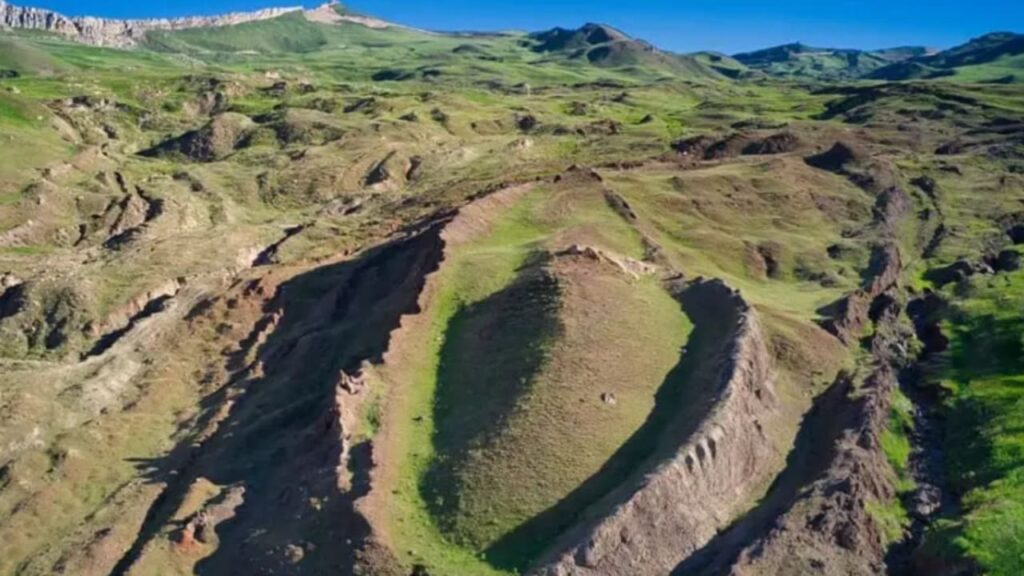
The story never dies. Since the days of Marco Polo (who mentioned Ararat in his writings, no big deal), explorers have tried to find Noah’s Ark, a vessel so iconic, it’s got its satellite search history.
Some modern theories focus on the “Ararat Anomaly”, a curious shape spotted via satellite imagery on the mountain’s northwest side. It looks like… well, kind of like a ship. Or a shadow. Or maybe your imagination is running wild.
Over the decades, there have been:
- 1949: U.S. Air Force takes classified aerial photos of “boat-like structure”
- 1960s–80s: Expeditions using radar, digging tools, and divine guidance
- 2000s: Chinese-Turkish expedition claims to find wooden remains at 4,800 meters
None of these findings has been universally accepted by the scientific community, and most were debunked or inconclusive. But the search continues because humans love a good mystery, especially if it involves 300 cubits of timber and two of every animal.
Some religious groups even fund their expeditions, armed with ancient maps, holy books, and a strong belief that they’re this close to proving Genesis right.
UFOs and Paranormal Sightings? Yep, We’re Going There
You knew this was coming. No legendary mountain is complete without someone swearing they saw lights in the sky, floating shapes, or “figures” moving across the glacier that didn’t look… human.
Ararat has been tied to:
- Alleged UFO sightings (blinking lights during storms)
- Unexplained aircraft anomalies
- Stories of “watchers” or shadowy figures who appear then vanish without a trace
Most of these tales come from night climbers or local shepherds. Skeptics blame altitude-induced hallucinations. Believers? They’re already writing screenplays.
If Netflix doesn’t greenlight “Ark Hunters: The Ararat Files” within a year, they’re missing an opportunity.
Archaeology and Anthropology: What Lies Below
While no Ark has been found (yet), Mount Ararat’s surrounding region is rich in ancient artifacts. Relics. Ruins. Resilience. The Ararat region is a living epic, one chapter carved in stone after another..
Sites like the Ishak Pasha Palace near Doğubayazıt offer a glimpse into Ottoman and Persian-era life under Ararat’s shadow. Old Christian cemeteries, cave dwellings, and ancient trade route markers litter the lower slopes.
So even if the Ark never existed or never landed here, he mountain has been a stage for real human drama for thousands of years.
Ongoing Research and Expedition Hopes
In the 21st century, technology has changed the game:
- Ground-penetrating radar
- Thermal imaging
- 3D terrain scanning
- Drone exploration
New expeditions keep trying to access hard-to-reach zones, especially the frozen summit cliffs and rocky overhangs. But harsh weather, military restrictions, and plain old gravity keep most explorers humble.
Still, the idea that something, be it an ark, a fossil, or a forgotten tomb, lies buried beneath Ararat’s surface is what keeps science and faith on speaking terms here.
Part 5: Why Mount Ararat Still Matters Culturally, Spiritually, and Environmentally
Mount Ararat isn’t just a frozen triangle poking the sky; it’s a living symbol. For some, it’s faith frozen in stone. For others, it’s a national monument seen through binoculars. For climbers, it’s a beast to be tamed. And for scientists, it’s an icy puzzle still missing a few pieces.
Let’s recap why Ararat still matters in 2025 and beyond.
Cultural Identity: A Mountain in the Heart (But Not the Map)

To Armenians, Ararat is more than just geography; it’s memory, heritage, and hope. Even though it lies within Turkey’s borders today, it’s engraved on Armenian literature, art, and even their national coat of arms. From poetry to politics, Ararat is a symbol of endurance.
To Kurds, it’s the guardian of their pastoral lands, woven into oral traditions and local spirituality. To Turks, it’s a prized national park and mountaineering challenge, often promoted in eco-tourism circuits. Ararat is like that one friend everyone claims, even if none of them can fully agree on who invited them to the party.
Spiritual Significance: Between Heaven and Earth
Regardless of belief system, the idea of a mountain as a divine meeting point is universal. Ararat fits the mold perfectly: isolated, snow-covered, towering, and mysterious. It’s a symbol of:
- Survival (Noah’s Ark)
- Faith (pilgrimages)
- Transcendence (spiritual journeys)
- Test (physical & emotional limits)
You don’t have to be religious to feel something up there, awe, clarity, or just your lungs begging for mercy.
Environmental Significance: Ice, Flora, and a Fragile Future
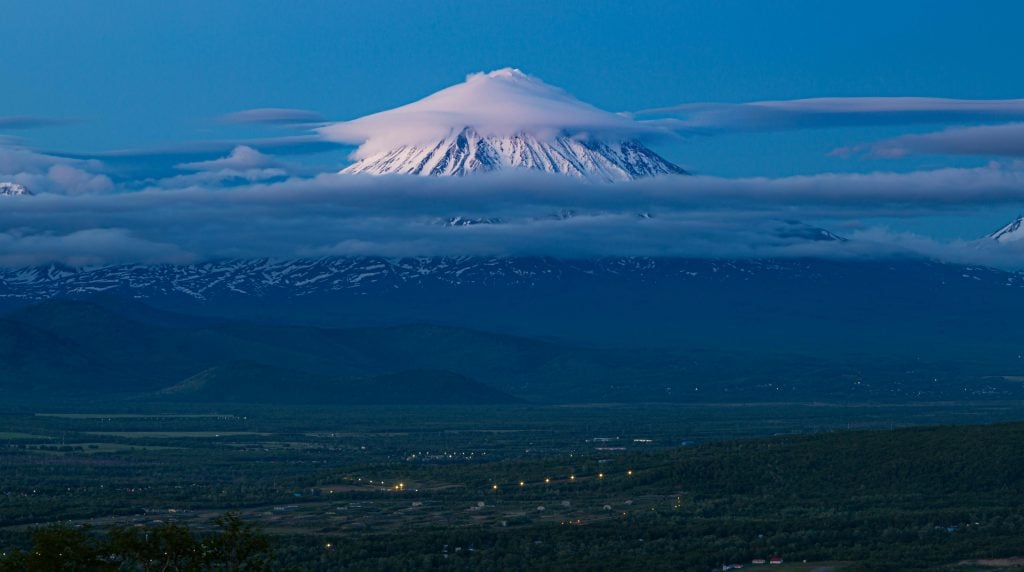
Like many high-altitude regions, Mount Ararat is sensitive to climate change. Its glaciers are retreating, snowfall patterns are shifting, and local ecosystems are under pressure. Some species of plants and animals found here exist only on Ararat’s slopes.
Researchers use it as a climate barometer; its snowpack levels, temperature fluctuations, and glacial data help scientists understand broader environmental changes in the Caucasus and Anatolia regions.
TL;DR: Save the mountain, save the message. Nature’s megaphone is melting.
FAQ
Q1: Where exactly is Mount Ararat located?
A: In eastern Turkey, near the city of Doğubayazıt, in Iğdır Province, close to the borders with Armenia and Iran. Coordinates: 39°42′N 44°17′E.
Q2: Can you climb Mount Ararat without a guide?
A: Not legally. Foreigners are required to climb with a licensed local guide, and a special permit is mandatory due to its military-sensitive location.
Q3: Is there evidence of Noah’s Ark on Ararat?
A: No conclusive evidence has ever been found. Plenty of expeditions, theories, and tantalizing “findings,” but nothing that the scientific community universally accepts. So far, it’s still a legend.
Q4: How tall is Mount Ararat?
A: 5,137 meters (16,854 feet), the highest point in Turkey.
Q5: What’s the best time to climb it?
A: July to September offers the best weather window, with less snow and clearer summit access. Outside those months? Get ready for snowstorms and frostbite.
Q6: Is it an active volcano?
A: Dormant, not extinct. The last major eruption was in 1840. Scientists still monitor it for signs of activity.
Q7: Is Mount Ararat in Armenia?
A: Nope. It’s in Turkey. But you can see it clearly from Yerevan, Armenia’s capital, and it remains a powerful symbol for the Armenian people.
Q8: Are there other things to do near Mount Ararat?
A: Yes! Visit the Ishak Pasha Palace, explore Kurdish villages, check out hot springs, and soak in centuries of layered history in Doğubayazıt.
Q9: Any health risks for climbers?
A: Altitude sickness is the main concern. Proper acclimatization is crucial. Also expect freezing temps, strong winds, and unstable weather.
Q10: Can you see the mountain from space?
A: You bet. NASA satellite imagery clearly shows Ararat, especially its snow-capped peak and the so-called “Ararat Anomaly.”
Final Thoughts
Mount Ararat is one of those rare places where myth and matter collide. It’s a landform, a symbol, a puzzle, and a pilgrimage all rolled into one icy giant. Whether you approach it as a hiker, a believer, or just a curious soul scrolling travel blogs on a Wednesday night, Ararat delivers more than altitude. It delivers awe.
And maybe, just maybe, it still has secrets to share if you’re willing to climb high enough to listen.



